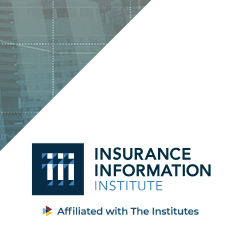
By Lewis Nibbelin, Research Writer, Triple-I
Illinois insurers narrowly avoided increased government involvement in insurance pricing as state legislators rejected “an extreme prior-approval system found nowhere else in the country,” according to a joint statement from the American Property Casualty Insurance Association, the National Association of Mutual Insurance Companies, and the Illinois Insurance Association.
If approved, the bill would have given regulators the authority to block rate change and order refunds from insurers for premiums deemed excessive, effectively generating “fewer choices and greater instability,” the statement continued.
While calls for the bill began in July, following homeowners’ insurance rate hikes, Illinois has a history of legislative challenges to actuarially sound pricing. Similar legislation in Louisiana passed that same month, amid record rate filing rejections in Pennsylvania and two California lawsuits accusing insurers of deliberately underinsuring policyholders to maximize profits.
Such trends underscore pervasive misunderstandings surrounding risk-based pricing, the practice under which insurers offer different prices for the same coverage based on risk factors specific to the insured. Without it, insurers could not adequately cover mounting natural catastrophe losses, inflationary pressures, and other rising costs, leading to an insufficient policyholder surplus to pay claims. When surplus falls below a certain threshold, insurers must raise premium rates, adjust their coverage availability, or, in extreme cases, become insolvent.
Under this pricing methodology, Illinois benefits from better coverage affordability compared to the national average and a competitive insurance market of more than 200 operating insurers.
“Illinois has a very stable insurance marketplace,” said Triple-I CEO Sean Kevelighan. “Restrictive legislation could lead to a California-like regulatory environment that would impact insurance affordability and availability in the state, rather than help consumers as intended.”
Rather than involve themselves in the complexity of insurance pricing, policymakers in Illinois and elsewhere would do a greater service to their constituents by exploring and investing in risk reduction through cost-saving mitigation and resilience investments. The property/casualty insurance industry can be a valuable partner in such beneficial approaches.
Learn More:
New Illinois Bills Would Harm — Not Help — Auto Policyholders
Resilience Investment Payoffs Outpace Future Costs More Than 30 Times
L.A. Homeowners’ Suits Misread California’s Insurance Troubles


